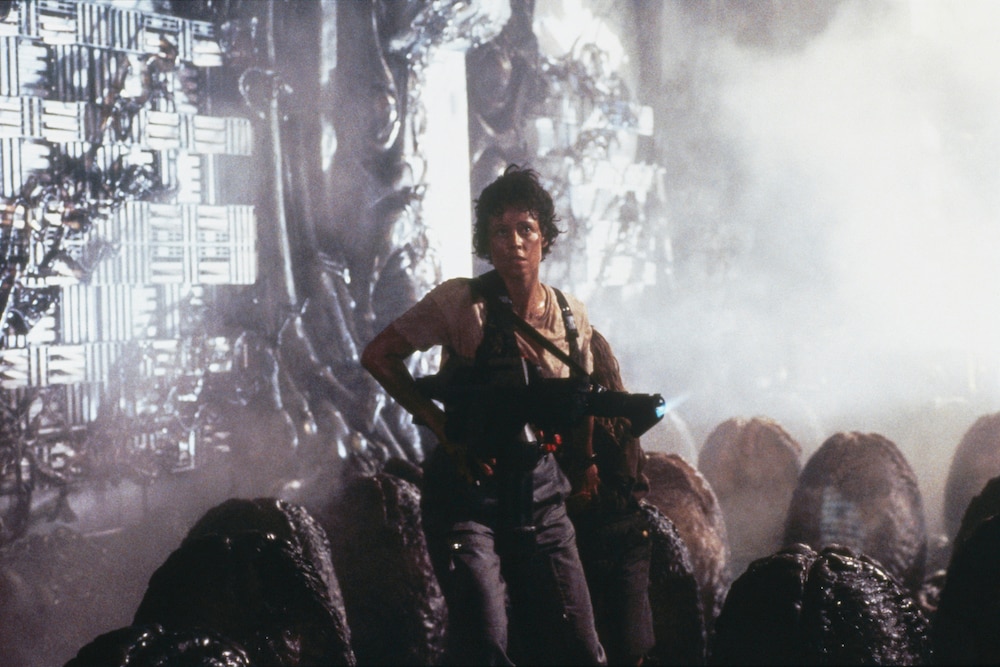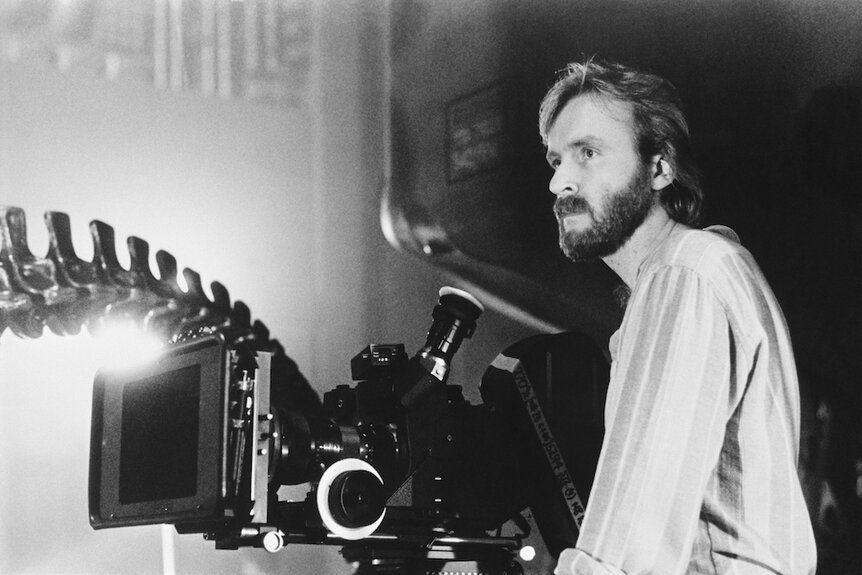Create a free profile to get unlimited access to exclusive videos, sweepstakes, and more!
James Cameron explains how a stinging nightmare inspired the Xenomorph Queen climax in 'Aliens'
A dream full of wasps gave us a room full of Xenomorph eggs.

It's common knowledge that James Cameron conceived of the general idea for 1984's The Terminator during a fever-induced nightmare. What may not be as widespread is the story of how a similar distressing dream inspired the now-iconic climax of the acclaimed filmmaker's second major sci-fi project: 1986's Aliens.
The practice of translating unconscious experiences onto the big screen is discussed several times in Cameron's new book, Tech Noir (on sale tomorrow), which details his career as an illustrator as well as a director. Cameron took part in a limited press roundtable Friday to discuss the publication and SYFY WIRE got the chance to ask him if he ever experienced a dream that was too horrific to draw or turn into a cinematic visual.
"I think horror in dreams is a very real thing. We all have nightmares sometimes to one extent or another. I have some corkers," he said. "I think horror is often not necessarily manifesting in the form of a horrific design, it’s really more of a feeling. It’s a pervasive feeling of dread or terror or the imminence of something about to happen. I mean, I get plenty of design ideas from dreams; I even get situational narrative ideas from dreams."
He went on to discuss the nail-biting denouement of Aliens, in which Ripley (Sigourney Weaver) heads back into the Xenomorph nest in order to rescue Newt (Carrie Henn) before LV-426 goes kablooey. Armed to the teeth with a Pulse Rifle, grenades, and a flamethrower, Ripley finds the girl, only to lead them both into the very center of a clutch of eggs being laid by the Xenomorph Queen.
"Everything just kind of slows down as she realizes, kind of looking around, where she is and she starts to turn. And there’s a sense of imminence of something very, very bad in that moment before you see it," Cameron explained. "And then it cuts wide and you see she’s in the egg chamber. And then you start to realize that there’s this breathing presence in there with her. So she’s managed to, in her haste, project herself into the center of the most lethal environment that the film proposes."
The writer-director continued: "That comes from a dream in which I came into a room, the room was pitch-black [and] the only light was from the doorway. I walked into the center of the room and then realized that every square inch of the walls and ceiling were covered with wasps and if I moved, if I breathed, if I did anything, they would attack. But they weren’t attacking. So there was this equipoise; there was this moment to appreciate exactly how screwed I was. So, I remember that feeling and I thought, ‘How can I translate that feeling to the moment in a horror film?’"
Cameron then employed a number of audio-visual tools to illicit that very sense of dread from the audience, making them feel as though they too had just wandered into a room full of angry wasps.
"I’m reasonably pleased with it. We did some sound tricks — we took all the sound away, we went to slow-motion, so we were using cinematic techniques to create a feeling," he continued. "And, of course, the feeling of imminent badness was, ‘We’re gonna reveal something to you’ and then we revealed the Alien Queen. That didn’t come specifically from a dream. The Alien Queen with the head that emerges from this sheath-like structure, that was just extrapolating on top of some of the ideas from Alien, where you reveal the creature at first and then you reveal more as it extends its inner mouth through its outer fangs. So, it took on these kind of Freudian, subconscious, insane kind of levels. There was an insanity to the creature in Alien, which I also wanted to try to convey."
The overall takeaway Cameron wanted to impress upon us is that "dreams are intimately bound up in the process, but it’s not just necessarily that some great monster or creature appears right in front of you. Although that did happen with The Terminator. This skeletal chrome figure walking out of the fire. There’s a thing that I think most people don’t talk about in dreams is you know what something is."
He concluded: "Your own mind is creating it and projecting it to you. Even though it may be vague in its outlines, you know what it is. So I knew it was a machine. I knew it wasn’t, for example, a skeleton — like a mummy that had gotten burned and its skeleton was emerging. I knew that it was a machine in the dream and I knew that it had once had a human-like exterior, which had been burned away. That’s not necessarily in the image. We don’t know what it used to look like in the image, but you know because you’re also authoring the dream in some kind of crazy, recombinant way from images and ideas from your waking life. You know what it means, so it has a narrative element to the image already."
Featuring a foreword by Guillermo del Toro, Tech Noir: The Art of James Cameron goes on sale from Insight Editions Tuesday, Dec. 14.



























